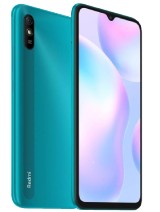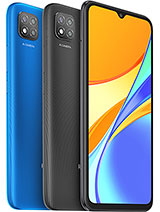Xiaomi Redmi 9 vs Redmi 9C vs Redmi 9A. Explanation of differences between different versions. By Device Lab
Hello, dear subscribers and guests of the techno ROG channel in 2020, Xiaomi has significantly expanded its line of the Redmi smartphones. The entry level now consists of three versions: the standard model, Redmi, nine, the simplest version of the Redmi 9a and the newest product, which is the Redmi 9c. This is a slightly more advanced version of the 9a. The official prices of these smartphones differ by a little amount of money, but each of them offers very decent characteristics for its category. Given the different prices and names, it's easy to guess that these Redmi have different advantages. However, many customers are confused by this choice.
Does it make sense to overpay for the Redmi 9, or is it better to save money by buying the 9a or the 9c? In this video, I'm going to explain the real difference among them? Let's take a closer look at the characteristics in terms of design display. If you find this comparison helpful, please support this video by liking or comment and also subscribe to the techno ROG channel and press the bell. So you'll always be the first one to watch new comparisons and top lists. The video description contains the links to the detailed specifications and current prices of the Redmi smartphones. From this comparison, the Redmi 9, 9a and 9c have a modern design, but for the sake of lowering the price tag, their cases were made of plastic.
Their surface has a rough texture. The first thing that catches your eye is the unique design of the back panel for each version. The Redmi 9 cannot be confused with 9a or 9c. They are all different. The most minimalistic design belongs to the Redmi 9a, because there is only one main camera in this version.
The smartphones do not differ from their display side, they all have the same drop, shaped front, camera and narrow bezels, but the standard version of the Redmi nine has them the narrowest. Therefore, its dimensions are slightly smaller. They are about 163 mm in length versus almost 165 mm in the 9a and the 9c. Although the weight of the 9 is a couple of grams heavier, the Redmi 9 is also the only version with an USB c connector and an infrared transmitter for controlling home applications, whereas the Redmi 9 is the only version without a fingerprint scanner, each version has a 3.5 mm audio jack. The diagonal of the display in all three Redmi smartphones is absolutely the same.
It is 6.53 inches. There is a classic IPS liquid crystal matrix, used to display the image. The 9a and 9c versions offer a decent resolution of 720 by 1600 pixels for the ultra budget category, but the Redmi 9 screen resolution is increased by 1080 by 2340. This is very cool. It's not easy to find a smartphone with a full HD plus display and such a low price tag, keep in mind that even some more expensive brands, let's not say their names, save on their IPS matrix.
Obviously, the image of the Redmi 9 screens is as clear and detailed as possible. However, keep in mind that the versions 9a and 9c have the android system which, due to its medium resolution, takes up less ram and slightly less battery power. There is another exclusive advantage of the standard version of the Redmi 9. It is the presence of the protective corning gorilla glass 3. All Redmi smartphones are equal in terms of the available display settings options.
You can adjust the color temperature and use the reading mode, which makes your eyes less time. There is also a special day mode. The general advantage of the Redmi smartphones is that all versions run on the latest 10th android, with an improved proprietary mini shell that is regularly updated. Not every brand cares about installing modern software on their ultra budget smartphones. The mini interface has a ton of interesting and useful features.
For example, it supports gesture control, customization of themes. There is also a simplified mode that makes it easier to use the smartphone with one hand and many other features. It is clear that the smoothest interface and good multitasking are provided by the standard, Redmi 9 version. This smartphone works quickly, even with complex applications in other versions. Of course, the same smoothness is not guaranteed under high load.
There can be some lag as a rule. Everything works fine if you run no more than two to three applications. At the same time in terms of biometric security, the Redmi, 9 and 9c versions look more advantageous because they have a fingerprint scanner on the back. The owners of the Redmi 9a can use the face. Recognition feature to unlock the smartphone via the front camera.
In terms of cameras, the Redmi 9 is the most advanced. The main unit on the back consists of four lenses, including the 8 mp ultra-wide angle lens and the 5 mp macro lens. The front camera has a maximum resolution of 8 megapixels, while the other versions have only 5 megapixels. The Redmi 9c has two main cameras. Although the square unit was originally designed for at least three, unfortunately, there is no ultra-wide angle lens.
The second additional camera is a 2 megapixel depth sensor and the Redmi 9a smartphone does just fine with one main camera. The main thing is that its 13 megapixel resolution is not reduced in comparison with the other versions, and, oddly enough, only the Redmi 9a allows you to record videos in full HD with 60 frames per second, the Redmi 9 and the 9c record video at the standard 30 frames per second. If you are not obsessed with taking photos and videos, the camera's capabilities of the Redmi 9a will be more than enough. A noticeable increase in the quality and functions of the camera is observed only in the Redmi 9 version. The Redmi 9 also provides maximum performance thanks to its very powerful hello g80 chipset, with an eight core processor that runs up to two gigahertz.
This version offers the most gigabytes of memory as well. It is up to 4 by 64. The minimum option is 3 by 32 gigabytes. I will give the silver medal to the Redmi 9c smartphone, which also has an option with a 64 gigabyte drive, but the amount of ram is limited to 3 gigabytes. Although the operating frequency of the Redmi 9c processor reaches 2.3 gigahertz, its cores are simpler and the video chip is weaker. The third place is taken by the basic Redmi 9a version.
You will receive 2 by 32 gigabytes of memory and the most budgetary hello g25 chipset. Nevertheless, each smartphone functions quite quickly. All the processors confidently cope with everyday tasks and demonstrate good performance in games, especially the Redmi Note, as its chipset is literally two times more powerful. Well, its four gigabytes of ram also plays a role. The 9a and 9c versions are more suitable for undemanding users, children or the aldermen.
There are no fundamental differences in wireless functions between the Redmi 9 smartphones. Each version is equipped with a Bluetooth, 5 modules supports 4g, cellular networks, GPS, satellite navigation systems, glass and bad. However, the Redmi 9a was left without a NFC module, so it's clearly not for those who like to pay with their phone and only the Redmi 9 version provides the radio that works without headphones and dual-band Wi-Fi, despite the same battery capacity in all versions of Redmi, the 9a and 9c models, often last longer, due to their lower screen resolution than the standard Redmi 9. , but unlike its classmates, only the Redmi 9 supports fast charging technology, which is a prerequisite for the comfortable use of the smartphone with 5000 my batteries. True, the Redmi 9 comes with an ordinary 10 watt power adapter, with its help.
A complete recharge of such a capacious battery takes two to three hours. The more powerful 18 watt unit will have to be purchased separately. The battery life with a continuous backlighting. When watching a video reaches 20 hours in games. The battery runs out at about 10 per hour in standby mode.
The Redmi smartphones can hold a charge for about 30 days. The service life of the Redmi batteries is designed for a thousand recharge cycles. If you do not play around the clock using the internet via 4g, the battery capacity will begin to decrease no earlier than in two years. Next, let's get acquainted with a popular opinion about the ninth series of the Redmi smartphones negatives, the Redmi, nine one. The smartphone takes a few seconds to take one photo.
It would be better to have two normal cameras instead of four useless ones. Two, there isn't a notification light. Three. There is often a problem with the proximity sensor. The screen does not turn on or off automatically calibration is needed.
The Redmi 9c one, the cameras are so there isn't good quality, and they're not suitable for shooting at all. Two. There isn't any wireless charging three. The resolution is too low for such a large 6.5-inch screen the Redmi 9a one. Last year's 8a has a type c port.
While this models has a usual micro, USB 2. , it lacks a fingerprint scanner. That's not a big deal. Considering the price three. There is just one main camera, the Redmi, nine one.
It's good that there is an infrared transmitter. You can control TV, air conditioning and other equipment from your phone two. There is a large and clear display with full HD resolution. Three. There are cool characteristics and battery for the price for it's the best gaming smartphone in the budget category.
It has many useful features. The Redmi 9c one, it never gets hot in games super two. The battery life is amazing. The sound is also above average. Three, the quality is good.
It's a nice phone four, the Redmi 9c fully meets the needs of budget device, buy-ins the Redmi 9a one. It's a decent budget, smartphone with a massive 5000 my battery 2, the best ratio of price and quality 3. Furthermore, it has a very user-friendly interface. Furthermore, it also looks modern, four, a good phone for calls internet and social networks. Hopefully we have now sorted out the initial line of the Redmi smartphones.
As you can see, each version has its own advantages. All of them are concentrated, of course, in the Redmi 9. But if, for example, you do not use a smartphone for photos, then the Redmi 9a is a good choice. If you need more memory or NFC, you can choose the 9c version. Thank you all for watching, dear viewers, the detailed specifications and current prices for the Redmi smartphones can be found on the links.
In the description comment and like this video, there are still many interesting comparisons ahead. A subscription and a bell will help you not to miss them. See you at techno dog.
Source : Device Lab



























